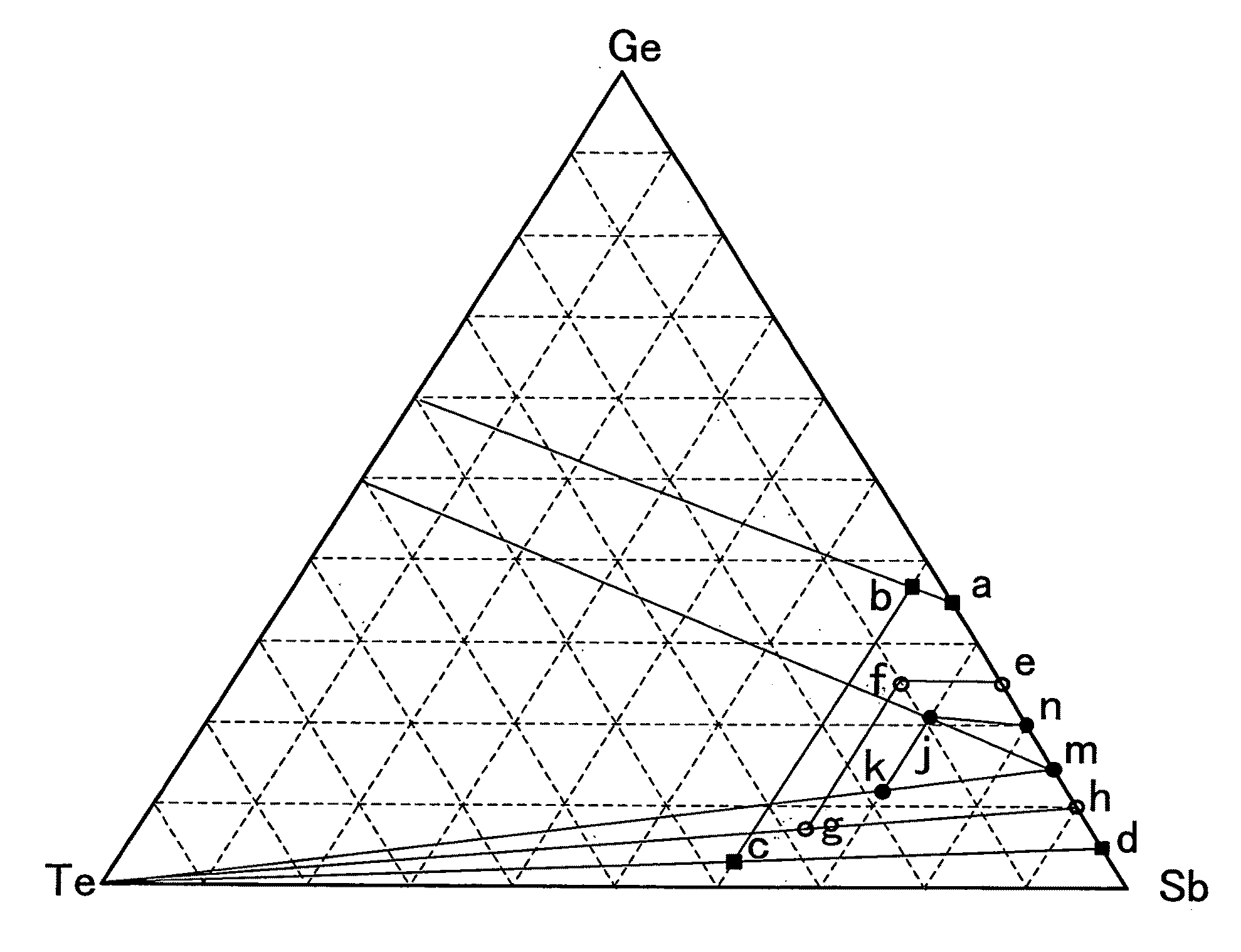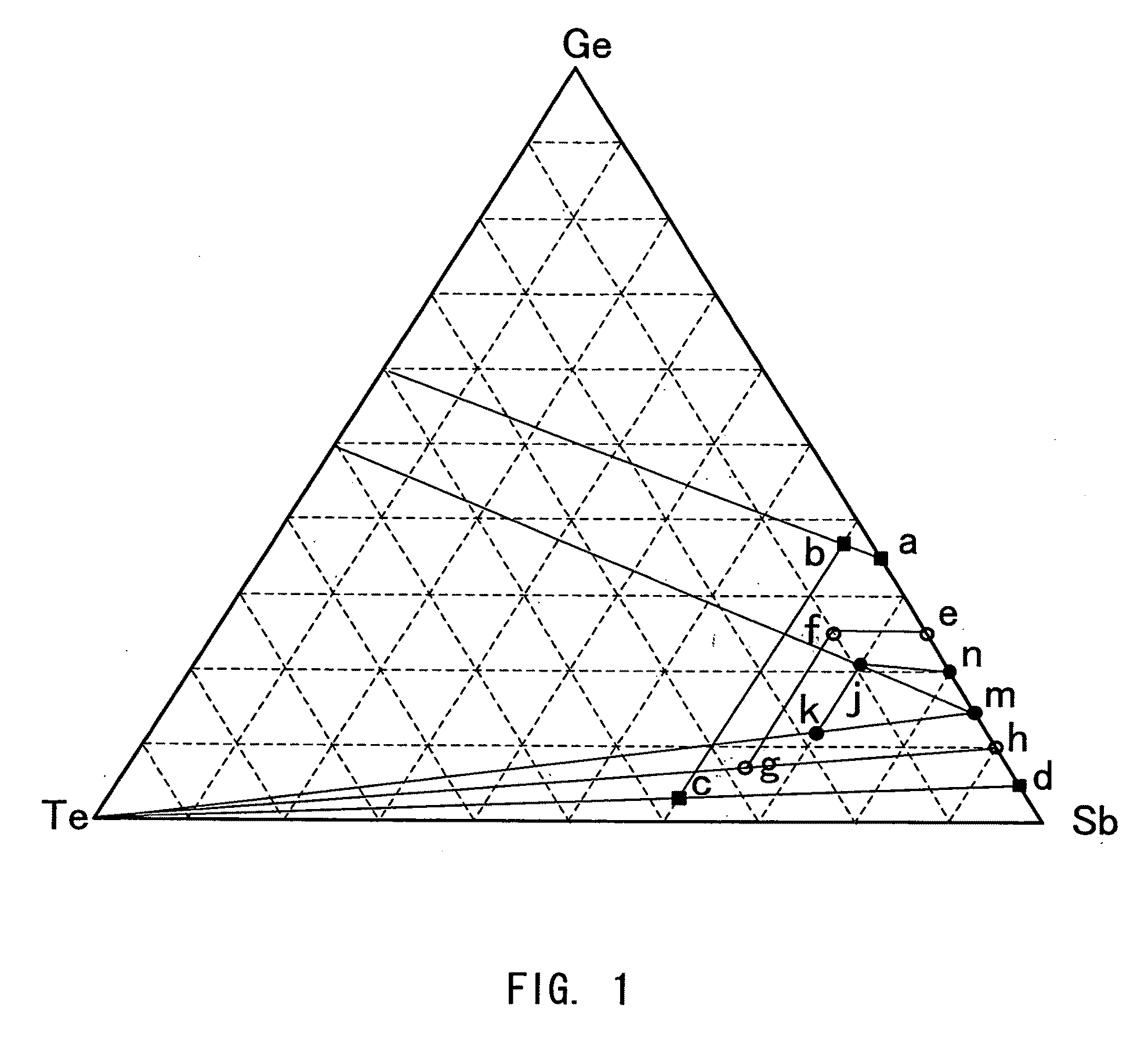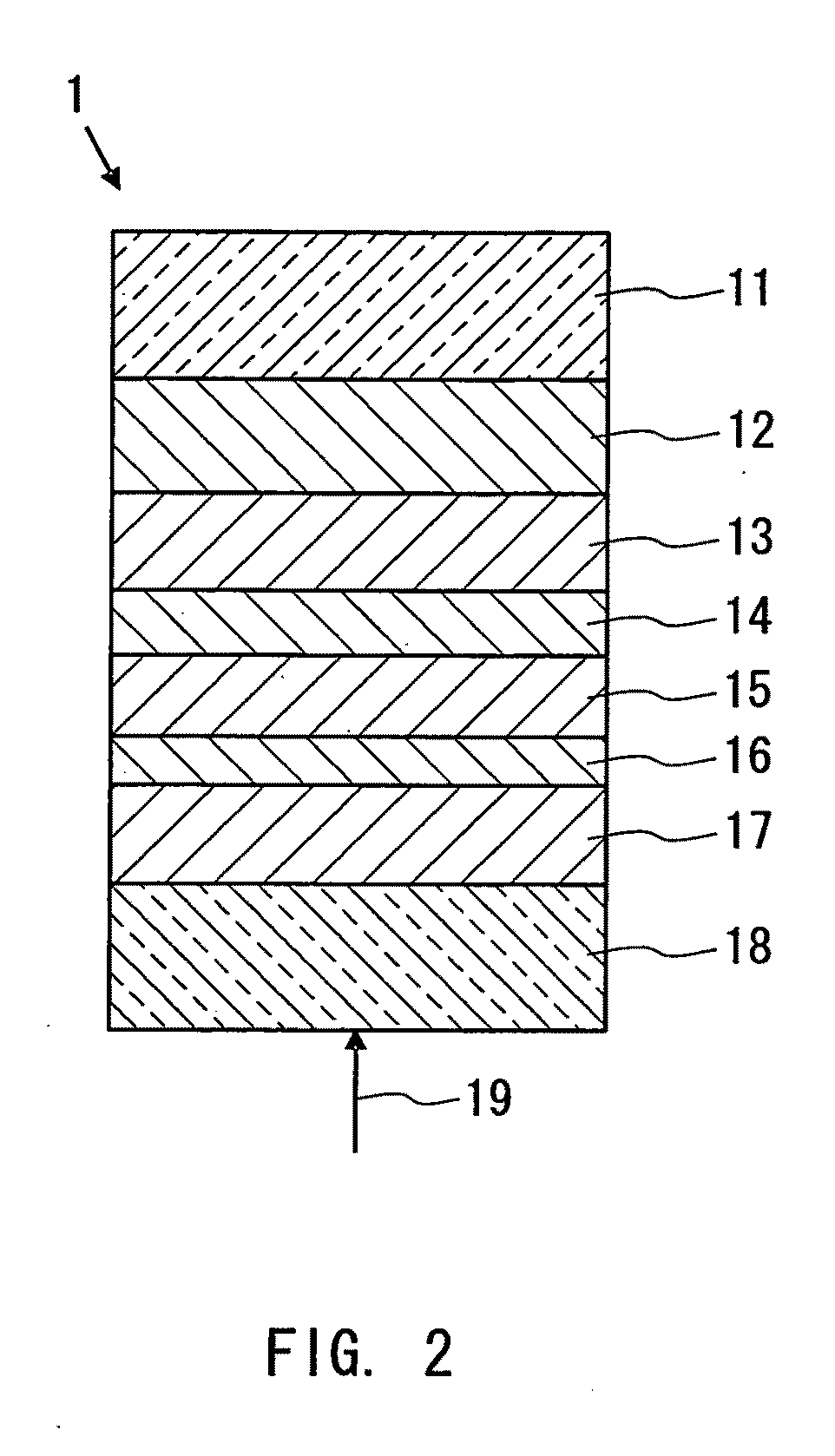Information recording medium, target and method for manufacturing of information recording medium using the same
a technology of information recording medium and target, which is applied in the direction of record information storage, instruments, transportation and packaging, etc., can solve the problems of low erasure rate, difficult to migrate atoms, and absorption distortion, and achieve high crystallization rate, wide linear velocity margin, and high linear velocity
- Summary
- Abstract
- Description
- Claims
- Application Information
AI Technical Summary
Benefits of technology
Problems solved by technology
Method used
Image
Examples
embodiment 1
[0085]An example of information recording media that record and reproduce information using a laser beam (an example of the first information recording medium of the present invention) is described as Embodiment 1 of the present invention. FIG. 2 shows a partial cross-sectional view of the optical information recording medium.
[0086]The information recording medium 1 shown in FIG. 2 is formed with a reflective layer 12, a second dielectric layer 13, a second interface layer 14, a recording layer 15, a first interface layer 16, a first dielectric layer 17, and a cover layer 18 that are disposed sequentially on the surface of a substrate 11. This information recording medium 1 is irradiated with an energy beam (generally, a laser beam) 19 for recording and reproduction from the first dielectric layer 17 side.
[0087]The cover layer 18 is formed of, for example, a dielectric or a resin such as a photocurable resin (particularly, an ultraviolet curable resin) or a slow-acting thermosetting...
embodiment 2
[0112]Another example of the information recording medium on or from which information is recorded or reproduced using a laser beam (another example of the first information recording medium of the present invention) is described as Embodiment 2 of the present invention. FIG. 3 shows a partial cross-sectional view of the optical information recording medium.
[0113]The information recording medium 2 shown in FIG. 3 is formed with a reflective layer 12, a second dielectric layer 13, a recording layer 15, a first interface layer 16, a first dielectric layer 17, and a cover layer 18 that are stacked in this order on the surface of a substrate 11. This information recording medium 2 is irradiated with an energy beam (generally, a laser beam) 19 for recording and reproduction from the first dielectric layer 17 side. In the information recording medium 2, the second dielectric layer 13 and the first interface layer 16 are layers (a first adjacent layer and a second adjacent layer) disposed ...
embodiment 3
[0120]Still another example of the information recording medium on or from which information is recorded or reproduced using a laser beam (another example of the first information recording medium of the present invention) is described as Embodiment 3 of the present invention. FIG. 4 shows a partial cross-sectional view of the optical information recording medium. The information recording medium 3 of this embodiment includes N (where N is an integer of 2 or more) information layers for recording and reproducing information. It is a multilayer optical information recording medium in which information can be recorded on or reproduced from each information layer by irradiation with an energy beam (generally, a laser beam) 19 from one side. The information recording medium 3 is provided with a first information layer 31 to an N-th information layer 38 that are stacked sequentially, with, for example, optical separation layers 32, 34, 35, and 37 being interposed therebetween.
[0121]The s...
PUM
| Property | Measurement | Unit |
|---|---|---|
| thickness | aaaaa | aaaaa |
| thickness | aaaaa | aaaaa |
| thickness | aaaaa | aaaaa |
Abstract
Description
Claims
Application Information
 Login to View More
Login to View More - R&D
- Intellectual Property
- Life Sciences
- Materials
- Tech Scout
- Unparalleled Data Quality
- Higher Quality Content
- 60% Fewer Hallucinations
Browse by: Latest US Patents, China's latest patents, Technical Efficacy Thesaurus, Application Domain, Technology Topic, Popular Technical Reports.
© 2025 PatSnap. All rights reserved.Legal|Privacy policy|Modern Slavery Act Transparency Statement|Sitemap|About US| Contact US: help@patsnap.com



